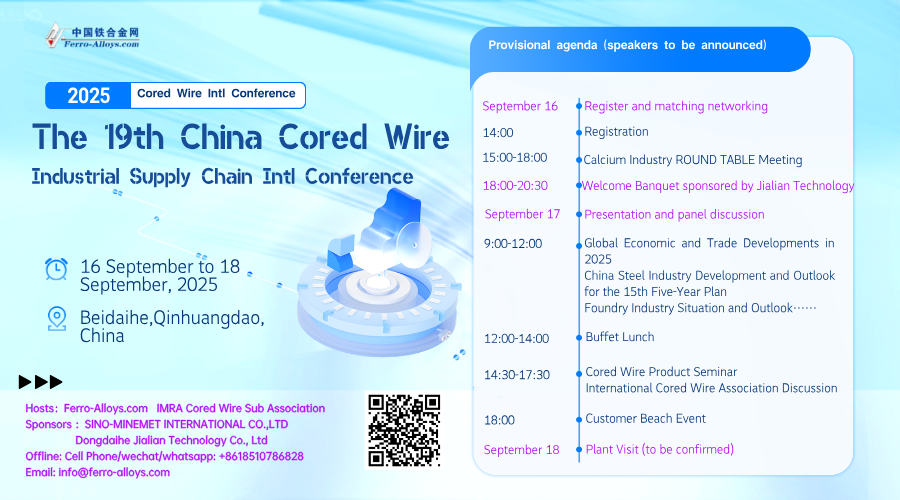[www.ferro-alloys.com] A Bismarck, North Dakota-based company is working with Purdue University Northwest to develop a process for converting waste products from steel mills into iron nuggets.
Carbontec Energy Corp. Chairman John Simmons told The Bismarck Tribune the company is looking for funds to build a $70 million plant in Northwest Indiana. That plant would employ 40 people initially at a 100,000 metric ton-per-year plant near the steel mills in Northwest Indiana.
It would be designed for a future expansion to 300,000 metric tons per year, at which point it would provide 100 jobs.
As steel companies have become interested in cost-saving measures, Carbontec is working with a large, international steel company to convert iron bearing steel mill waste products into iron nuggets, according to the company.
Currently, that waste is stockpiled, buried on site or hauled to commercial waste dumps at a cost of $20 per metric ton, Simmons said.
The U.S. Department of Energy recently announced a $300,000 grant to Purdue University Northwest, The Lawrence Livermore National Laboratory and Carbontec to utilize LLNL’s super computers and Purdue’s modeling expertise to optimize the design of the E-Iron Process furnace, which is expected to lower the cost of plant construction and improve energy efficiency.
The work at Purdue University Northwest is being done by the Center for Innovation through Visualization and Simulation, which has attracted more than $13 million in grants since its founding in 2009.
The Carbontec project not only can help find ways to recycle waste from steel mills, but could also help find new ways to use biomass, a renewable energy source, and reduce carbon dioxide emissions, according to CIVS director Chenn Zhou.
“Our focus is local, but also now national,” Zhou said. “Because of our success in problem solving we are recommended by our sponsors and other collaborators.”
Carbontec developed the E-Iron Process, in cooperation with Michigan Technological University, to use organic biomass in the place of coke or coal, minimizing the negative environmental impact of iron making. Any carbon dioxide emitted is recaptured from the atmosphere.
After cars and power plants, the iron and steel industry is the third largest contributor to carbon dioxide and other noxious emissions in the world.
A recently completed test program of Carbontec’s E-Iron Process successfully converted the waste products into pig iron-grade iron nuggets with 95 percent iron and 3 percent carbon. The nuggets, worth $300 per metric ton, are high-value feedstock for electric steel-making furnaces and iron foundries.
It will cost about $180 per metric ton, including financing, to produce a $300-per-metric ton product, which would lead to earnings of 55 percent before interest, taxes and scheduled debt payments, according to the company.The U.S. imports about 4 million metric tons of pig iron, largely from Brazil, Russia and Ukraine. The pig iron produced at a Carbontec plant would replace a portion of these pig iron imports while providing additional jobs, Simmons said.
In 2013, Carbontec had started plans for a 100,000-metric-ton iron plant in Spiritwood Industrial Park near Jamestown, North Dakota.
“Steel and scrap prices put that project on hold,” Simmons said, but the Jamestown plant remains on Carbontec’s future agenda.
“For our first plant, the (Indiana plant) provides a bigger opportunity.”**Article from Internet for reference only
- [Editor:tianyawei]



 Save
Save Print
Print Daily News
Daily News Research
Research Magazine
Magazine Company Database
Company Database Customized Database
Customized Database Conferences
Conferences Advertisement
Advertisement Trade
Trade















 Online inquiry
Online inquiry Contact
Contact

Tell Us What You Think